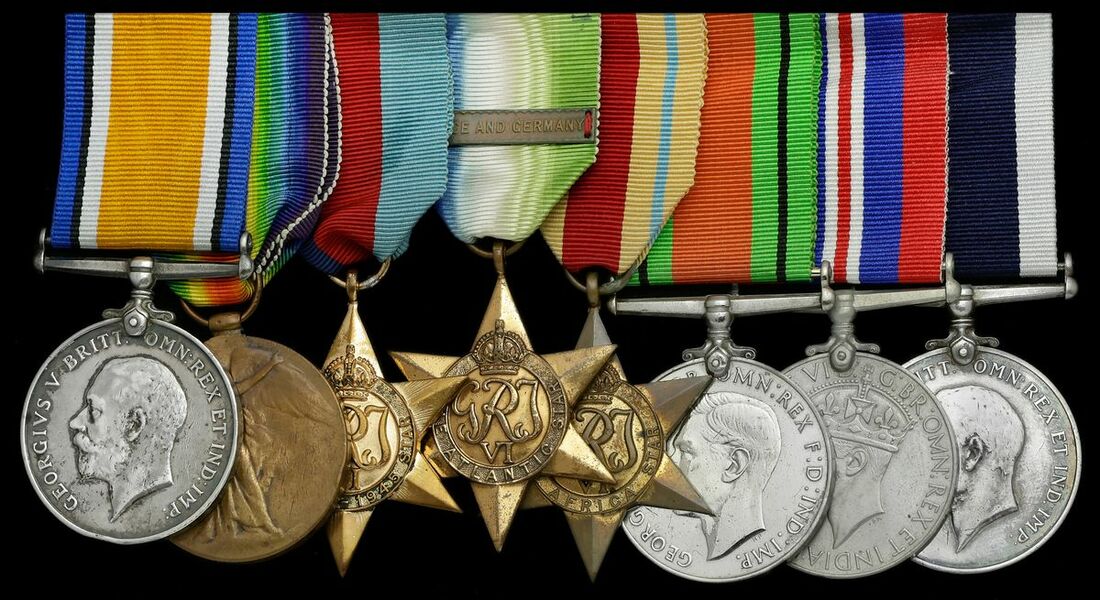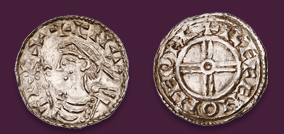
Auction: 23111 - Orders, Decorations and Medals - e-Auction
Lot: 801
Six: Engine Room Artificer Class I H. St. G. Wayling, Royal Navy, was served in the Great War as a Boy Artificer, later joining Iron Duke in the Black Sea, served with the Royal Australian Navy before returning to the Royal Navy for Second World War Service
British War and Victory Medals (M.8019 H. S. G. Wayling. B. Art. R.N.); 1939-45 Star; Atlantic Star, clasp, France and Germany; Africa Star; Defence and War Medals 1939-45, Royal Naval L.S. & G.C., G.V.R. (M8019. H. St. G. Wayling. E.R.A.1. H.M.S. Resource), mounted as worn, polished, edge bruising, pitting, overall nearly very fine (6)
Herbert St George Wayling was born at Portsmouth, Hampshire on 14 November 1898 and joined the Royal Navy on 20 July 1914 with the rank of Boy Artificer Class II at Fisgard. Undergoing his training here he was promoted Engine Room Artificer on 17 January 1919, being posted to the Battleship Iron Duke on 14 February. The next month she sailed for the Black Sea as part of the Allied Intervention, there to support the White Russian Forces. She was also involved in the occupation of the Ottoman city of Smyrna.
After a spell in the Mediterranean Iron Duke returned to the Black Sea, for a tour inspecting the White Russian positions around Yalta and Sebastopol. On her return journey she destroyed a number of Turkish guns that were guarding the Dardanelles Straights. Wayling was present for much of the post-war career of this ship but left her before her role in the Smyrna fire in 1922.
Posted to the destroyer Versatile he was with her when she accidentally rammed the submarine H42 on 23 March 1922. After further service, mostly ashore Wayling was one of the British sailors seconded to the Royal Australian Navy on 6 November 1925. Travelling to Australia he was stationed with the training ship Cerberus for the next four years, remaining there until 1929 when he reverted to the Royal Navy.
Joining the repair ship Resource on 24 March 1930 it was here that Wayling was promoted E.R.A. Class I on 14 November 1931 and awarded his L.S. & G.C. Seeing further service in the post war years he was finally pensioned on 13 November 1938, only to return the next year as hostilities increased before the Second World War. Stationed first with Keppel at Gibraltar he was posted to Velox when hostilities began. This outdated destroyer had also been returned to service for escort duty and served through the Battle of the Atlantic. She also took part in Operation Catapult, the British attack on the French Fleet at Mers-El-Kebir. Posted ashore on 1 June 1942 he served with Pembroke II for the rest of the war, being demobilised on 17 September 1945; sold together with copied service papers.
Subject to 20% VAT on Buyer’s Premium. For more information please view Terms and Conditions for Buyers.
Sold for
£110
Starting price
£100




